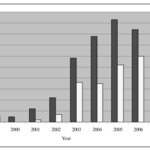Pharmacology

Maharanga emodi (Wall.)A.D.C. syn Onsoma emodi Wall (O. emodi Wall.=Maharanga emodi (Wall.) DC.,) (Boraginaceae )
Flower and roots are used as medicine.
The plants are distributed in Alpine Himalayas of Nepal from 3000 to 3900 m. also found from Garhwal to Bhutan at altitudes of 3,500-4,000 m.
The roots of O. emodi Wall.=Maharanga emodi (Wall.) DC., afford a dye which has been used for colouring wool and silk.
Crude drugs
1. Onsoma bracteatum Wall
2. O. hispidum Wall. ex D. Don syn. O. echioides C.B.( O. hispidum has been reported to be the source of Ratanjot, a red dye…

Two popular supplements taken by millions of people around the world to combat joint pain, glucosamine and chondroitin, do not work, according to research published today - but they don't hurt you either. Basically, they are expensive placebos.
Glucosamine and chondroitin are either taken on their own or in combination to reduce the pain caused by osteoarthritis in hips and knees. The researchers, led by Professor Peter Jüni at the University of Bern in Switzerland, state that although they don't work these supplements are not dangerous - "we see no harm in having patients…

Psychotropic medications - psychostimulants like Ritalin, antidepressants like Prozac and antipsychotics like Haldol - during pregnancy increase the probability of birth defects, according to a University of Copenhagen study.
In Denmark, psychotropic medications were associated with 429 adverse drug reactions in Danish children between 1998 and 2007 - more than half of the 429 cases were serious and several involved birth defects, such as birth deformities and severe withdrawal syndromes.
Professors Lise Aagaard and Ebbe Holme Hansen studied all 4,500…

Fish oil has been used as an anti-inflammatory (and a lot of other things) but scientists haven't been sure how the omega-3 fatty acids in fish oil work in that capacity but a new report in Cell shows how omega-3 fatty acids both shut down inflammation and reverse diabetes in obese mice. The report says omega-3s alleviate inflammation by acting on a receptor (GPR120) found in fat tissue and on inflammatory immune cells called macrophages, studies in mice show.
GPR120 is a G protein-coupled receptor (GPCRs), a group involved in many important cell functions and that includes the targets…

Want to make people healthier? Put more goof stuff in beer. And don't count out the smarts of ancient people in fun ways to stay healthy.
While antibiotics officially date to the discovery of penicillin in 1928, a chemical analysis of the bones of ancient Nubians (today's Sudan) shows that they were regularly consuming tetracycline, most likely in their beer, 1,700 years ago.
“We tend to associate drugs that cure diseases with modern medicine,” says Emory anthropologist George Armelagos, who did the study with medicinal chemist Mark Nelson of Paratek Pharmaceuticals Inc., “But it’…
One of the crazy repercussions of the idiotic “war on drugs”, apart from destruction of innocent lives and whole countries like Mexico and the US, is that you cannot openly buy many quite harmless substances while relatively dangerous ones are freely available.
An interesting chemical in this respect and also in regards to the philosophy of mind and what we understand to be “truth” is 2-(diphenylmethoxy)-N,N-dimethylethylamine, short Diphenhydramine (DPH). As a sleep aid it is available cheaply in 99 cent stores (in the US). You can also spend a lot of money instead buying the exact same…

Donald Light, professor of comparative health policy at the University of Medicine and Dentistry of New Jersey, says the pharmaceutical industry is a market for 'lemons' - a market in which the seller knows much more than the buyer about the product and can profit from selling products less effective and even less safe than consumers are led to believe.
Talking at the meeting of the American Sociological Association, he said three reasons why the pharmaceutical market produces "lemons" are: Having companies in charge of testing new drugs, providing firewalls of legal protection behind…

One solution to the heart risk caused by obesity, although an obtuse one, is to add things to the junk food industry instead of taking away some junk food.
Researchers at Imperial College London writing in the American Journal of Cardiology suggest fast food vendors provide statin drugs free of charge. Statins reduce the amount of unhealthy LDL cholesterol in the blood, and trial data has shown them to be highly effective at lowering a person's heart attack risk.
In the study, Dr. Darrel Francis and colleagues calculate that the reduction in cardiovascular risk offered by a statin is…

Calcium supplements are commonly taken by older people for osteoporosis but have now been associated with an increased risk of a heart attack, according to a study published in BMJ-British Medical Journal.
The results seem to indicate that a reassessment of the role of calcium supplements in osteoporosis management is needed. Calcium supplements are commonly prescribed for skeletal health, but the recent trial suggested they might increase rates of heart attack (myocardial infarction) and cardiovascular events in healthy older women.
To further investigate the issue, an…

Homeopathy's origin should be a clue to why there is no evidence to show it has ever worked. In the words of Samuel Hahnemann, the German physician at a time when being an M.D. was not a mark of respect, believed
"The vital force that animates the healthy body, rules with unbounded sway, and retains all the parts of the organism in admirable, harmonious, vital operation . . . so that our indwelling, reason-gifted mind can freely employ this living, healthy instrument for the higher purpose of our existence."
...
"when a person falls ill, it is only this spiritual vital force, everywhere…